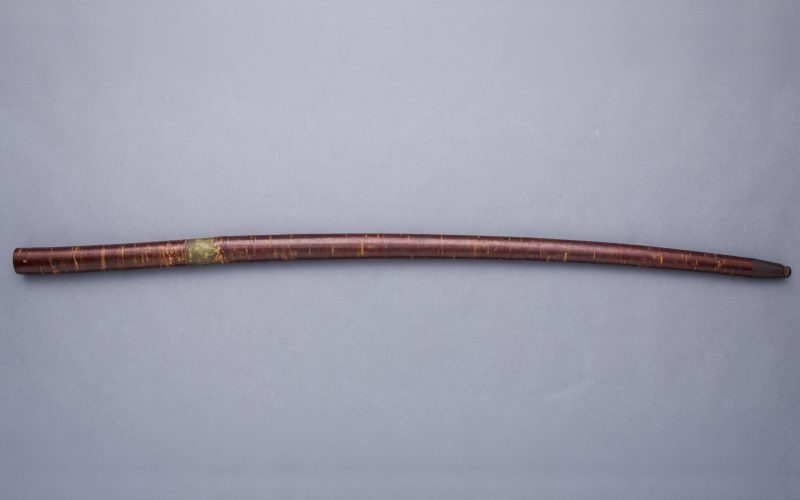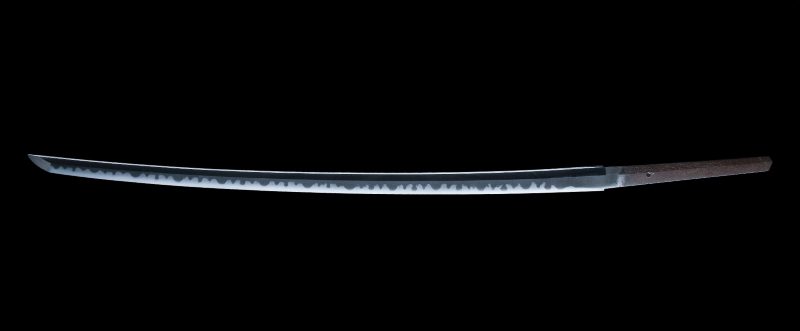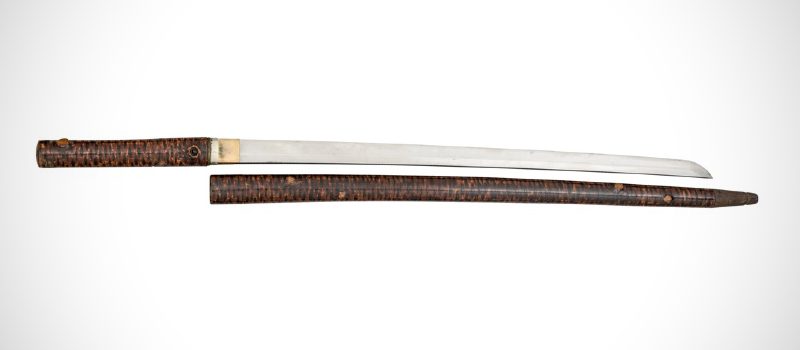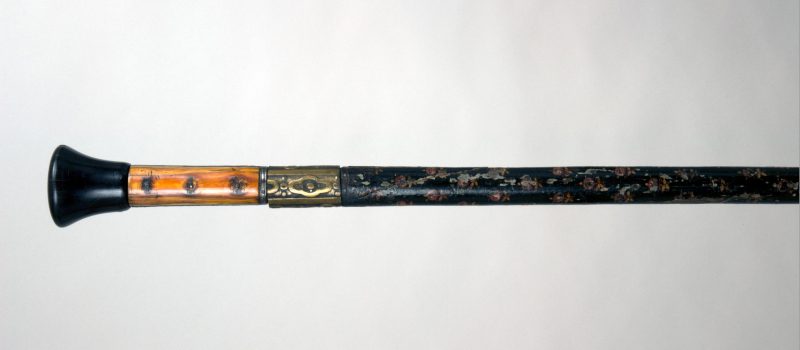Shikomizue: A Guide to Ninja’s Secret Cane

What’s in this article?
To be equipped for all sorts of situations, the ninja developed several multipurpose, secret weapons. The shikomizue is a hollowed-out staff or cane usually consisting of a hidden blade. When sheathed, it seems like an ordinary walking stick. Let’s explore the history of the weapon, its unique characteristics, and how anime and films have popularized it.
Characteristics of the Shikomizue
When it comes to Japanese swords, the shikomizue refers to a type of mounting in the form of a walking stick, disguising the weapon. Its appearance, quality of the blade, and material varied throughout history. Here are the things that make a shikomizue unique:
Quality and Construction
Historically, most blades with shikomizue mounting were of poor quality, likely because they served as a backup rather than as a principal weapon. Some examples had katana blades, which were only remounted into shikomizue on a later date.
Today, contemporary swordsmiths create high-quality replicas from various materials, including high carbon steel. These swords often have very sharp, clay-tempered blades with natural hamon or temperline patterns. Some also feature simulated hamon and blood grooves.
Blade Shape

Most shikomizue had straight blades similar to the ninja sword or ninjato. However, they were relatively thin and not as durable as the Japanese katana. Still, these blades had razor-sharp edges efficient for stabbing and self-defense. Nowadays, collectors can easily find shikomizue replicas with straight or slightly curved blades.
Size and Length
For convenience the ninja would opt for a blade shorter than usual swords. Some examples had an overall length of more than 100 centimeters, while others had wakizashi blade length between 30 and 60 centimeters. There is no standard measurement for the shikomizue, but modern replicas usually have a blade length of around 70 centimeters.
Appearance and Mounting

Unlike the samurai
As a battle-ready weapon, these
Modern replicas often come in natural wood or lacquered wood saya or scabbard. However, they usually look more polished and carefully constructed than cane-like or hyper-realistic to conceal the
Facts About the Shikomizue
Throughout history, ninjas used several staffs or canes that contained hidden weapons. One of them was the shikomizue, sometimes spelled shikomi-zue.
Here are some interesting facts about the secret cane:
Swords with cane-form mounting were in use since the Nara period
Since 710 CE, the Japanese had used swords in cane-style mounting. They were the so-called joto, particularly the kuretake-saya-joto and the urushi-saya-joto. The former had a kure bamboo scabbard and an overall length of around 160 centimeters. The urushi-saya-joto, on the other hand, had a thinner blade and a black lacquered scabbard.
In Japanese culture, sticks and staffs served as tools and weapons
The staffs were readily available for both commoners and privileged members of Japanese society. So, it also became necessary to utilize simple-appearing bamboo as improvised weapons. Apart from the katana
Almost all of the shikomizue mountings were created after the Meiji Restoration
In the Meiji period, the ban on swords created a demand for concealed weapons. Many utilized a wooden stick or cane to hide a shorter blade, usually not longer than 60 centimeters. While most of the
The shikomizue is a variety of a ninja’s shinobi-zue weapons
The term shinobi-zue literally means ninja staff and canes, including every stick type of weapon the ninja used throughout feudal Japan. The ninja often modified the simple staff to contain a fixed or articulated weapon. The shinobi-zue varies in length from 90 to 210 centimeters. The shikomizue is a secret cane, while the shikomibo and shikomijo served as staff and jo.
In ninja weapons, the shikomizue may contain a variety of hidden weapons
The term shikomizue often implies a
Sword canes similar to shikomizue were not uncommon throughout Europe

In 19th-century Europe, canes served as a gentleman’s accessory. Some of them had elaborately monogrammed
History of the Shikomizue
Sinc the staff was a common utilitarian item, the ninja utilized it against superior weapons during the time like the katana, wakizashi, halberds, and spears.
The Art of Bojutsu
The art of bojutsu, or the staff technique, was the foundation of all other shinobi-zue fighting skills. The ninja had in-depth training with different staff weapons, from a short stick hanbo to a 4-foot jo, 6-foot bo, and shikomizue.
In han-bojutsu or defensive stick fighting, the practitioner holds the cane in a standard walking stick fashion. On secretive missions, a ninja skilled at fighting with chains would carry one inside a shinobi-zue, while a knife thrower would bring a concealed blade.
In Pop Culture
The most known appearance of the shikomizue is in Zatoichi films. While several films depict the blind as victims, the Japanese introduced Zatoichi as a blind masseur and master swordsman with his signature
In the Kill Bill film, O-Ren Ishii wielded a similar sword in a contemporary scabbard. In manga and anime TV series, the shikomizue served as weapons of several characters, including Kisuke Urahara of Bleach and Tochiro Oyama of Gun Frontier. In The Last Blade video game, Hibiki Takane also used a similar-looking
Conclusion
In Japanese culture, sticks, staffs, and canes have always been staple weapons. While not as popular as the katana, the shikomizue remains a part of Japan’s history. The innovative design and functionality of the




